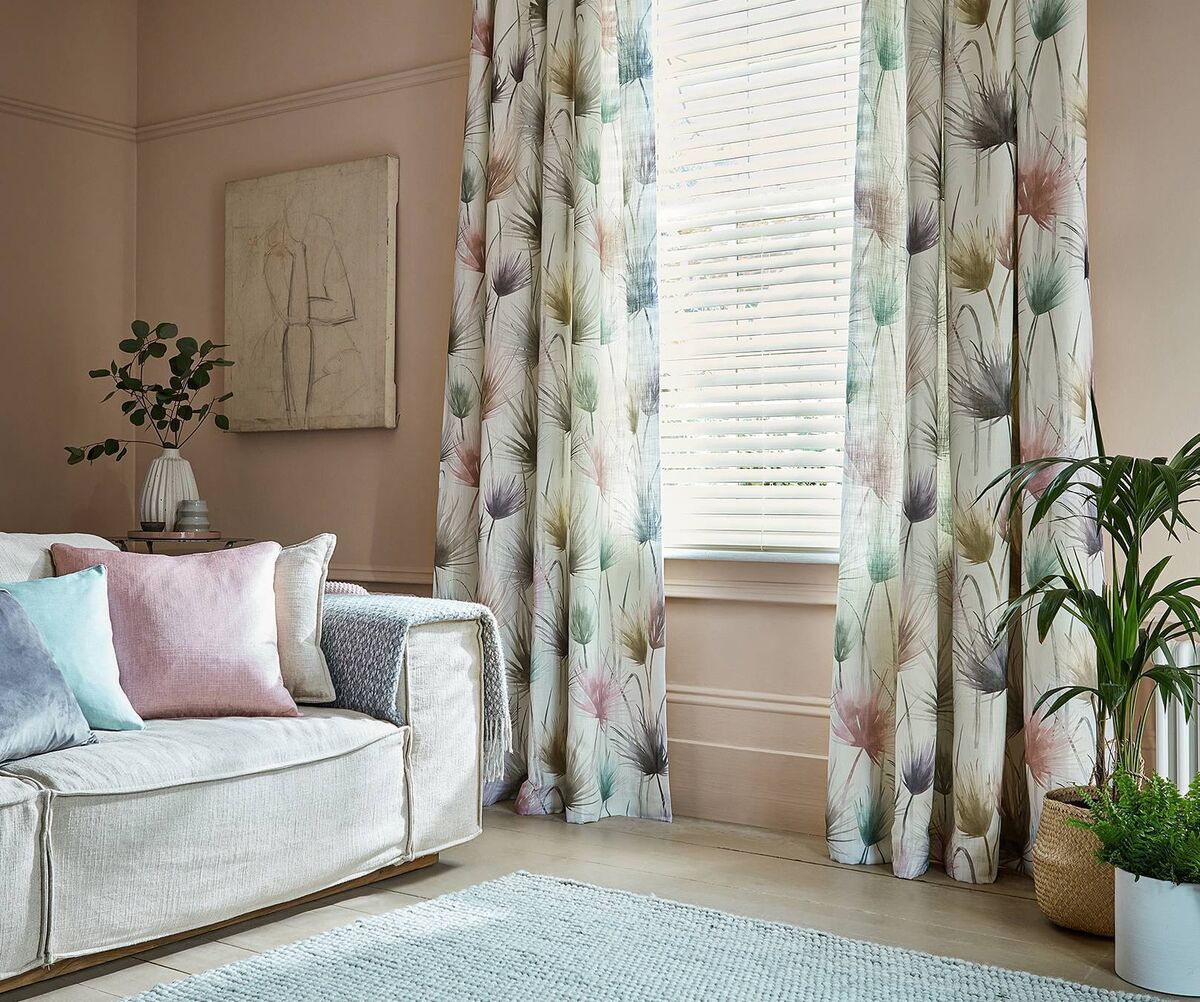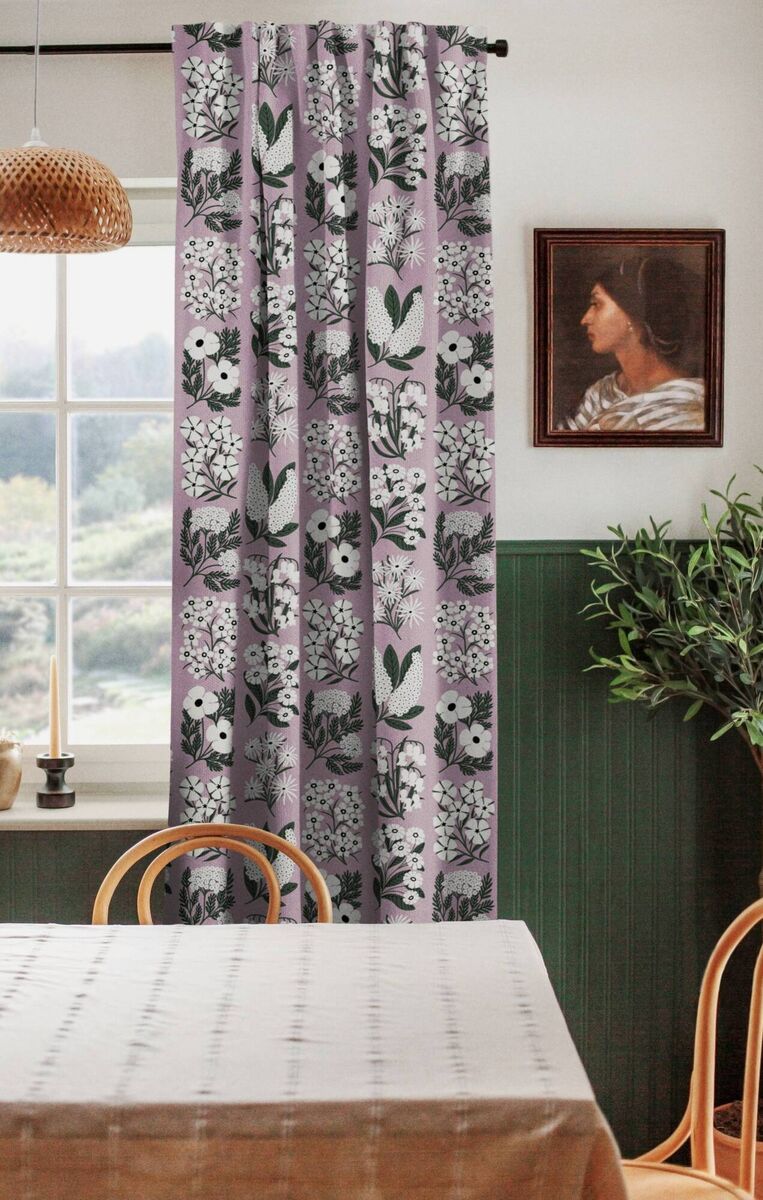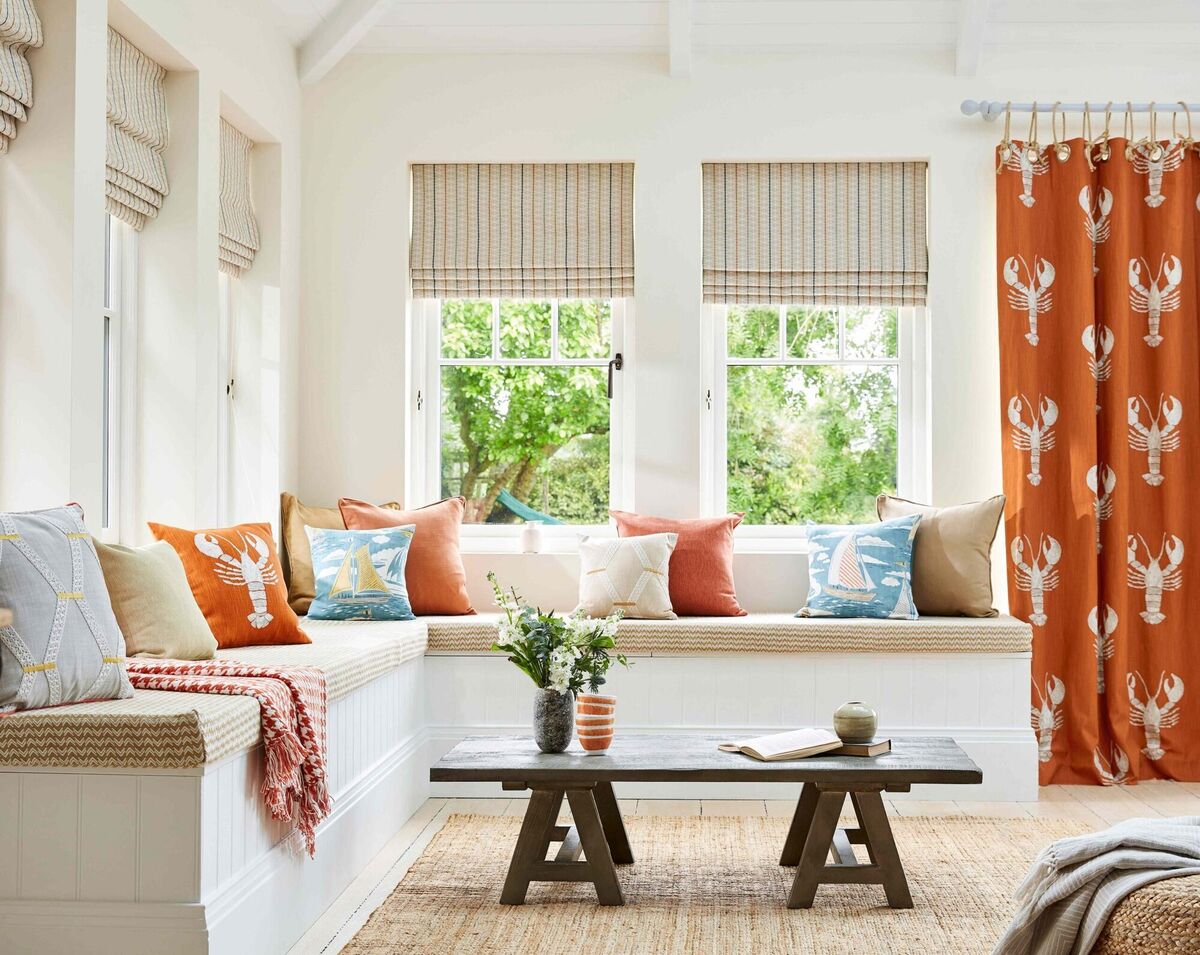Window treatments: How to select and hang curtains

Tied up on string, French doors wear curtains while the windows of this coastal home carry traditional striped blinds. Quirky and cheerful, the Cromer Embroidery fabric from Sanderson Home was inspired by the annual Crab and Lobster Festival in Cromer, Norfolk. From €77 per metre, suppliers include thedraperyshop.ie (Cork).
Always a draw, curtains offer a decorative flourish that can set the stage for a whole scheme, plus thermal performance, and a centimetre-by-centimetre light control. If you don’t know your pleats from your pelmets, here’s my simple-to-follow introduction for finding or making something swish.
Before considering whether to use a pole or rail, we have to start with the “heading”, that top section of the curtain connecting it to the hanging element. If you want a deep and very present, traditional heading, a relaxed, gathered-pleat is ideal for curtains with a long or short drop [length].
Wave headings are married to a dedicated track or pole and deliver a deep but chic look with rippled but perfectly repeating folds that stack beautifully.

Using the tape supplied with the curtain and your hooks, you can drop the curtain low on a pole or track, or using a higher line of hooks, fully shroud it with the curtain before pulling the three strings to gather the material into pleats with gathered and pencil pleats. The tension is up to you.

If you want to make a period architectural statement and match up your fixtures and fittings, choose a pole.
Curtain and blinds used together make the ultimate use of articulated light control, adding as much privacy and screening as you need by day and by night. With a translucent blind, you can have soft distilled light on call, while knowing you can completely shut up shop by pulling both dressings home when you choose.
Lining curtains with a complimentary fabric or blackout lining is a sign of quality with practical and ornamental considerations. Having curtains made, linings in plains, ginghams, and stripes (unless offered as standard) will generally push up the price of your curtains considerably.
If you have the funds and time to set-dress, two sets of curtains — with insulated lined curtains for cooler conditions and light to medium varieties for spring/summer can welcome in the new season.

There are dozens of books to get you started. My favourite (and it’s sold over 500,000 copies since its launch in 2017), is Anne Hildyard’s
from Dorling Kindersley. Packed with tips by soft furnishing experts, it includes 25 projects you can start this weekend explained in detail with clear step-by-step instructions; €20.99, easons.ie.












